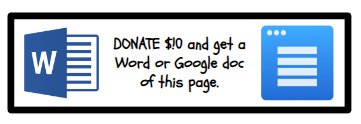

Elementary Teacher Interview
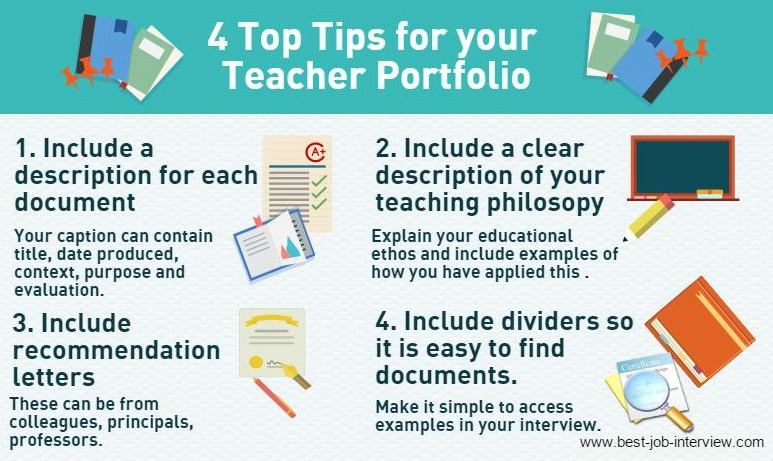
Graphic used with permission from www.best-job-interview.com.
Here is help to make a great resume ~ FlowCV – Free Online Resume Builder and Resume Templates
Check out Demo Lesson Tips!
Prepare and Bring a Portfolio
Bring a portfolio that shows who YOU are as a teacher. Create one online (make a website, a PowerPoint or MAKE A LIVEBINDER), bring your laptop to the interview, or go to the nearest office store and buy a 3-ring binder, page protectors, and dividers. The portfolio should include the answers to the below potential interview questions; specifically, include your:
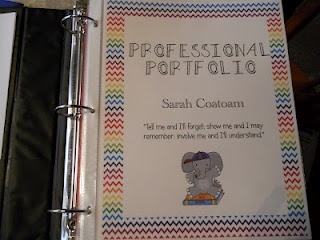
- Table of Contents
- Resume
- Standard cover letter
- All certifications ~ teaching license, SEI, CPR, CPI, Orton-Gillingham . . .
- List of all clubs, committees, etc. that you have participated in as a teacher and student-teacher. Were you a PTO representative, School Site Council member, Climate Team member, data team member, or mentor teacher to a new teacher?
- Transcripts
- Honors or awards you have received
- Certificates from classes/workshops you have taken
- Recommendations from former employers, letters from pleased parents, letters from students
- Your teaching philosophy ~ a paragraph. Samples are listed below.
- Lesson plan samples: Try to include both ELA and Math. If you don’t have a great lesson, make two for the grade you are interviewing for! Here are the Lesson Plans!
- Teaching observation reports from your former principal or your college advisor
- Information on curriculum and assessment that you know ~ Fountas & Pinnell Guided Reading, Engage New York, Lucy Calkins, Fundations, Pearson DRA2, running records, Open Circle. . . Research what the school you are applying to uses, and write a little blurb about it to include in your portfolio!
- Photos of your students’ projects and pictures of productions ~ did your class put on a show or play or some other performance?
- Photos of bulletin boards you’ve assembled
- Photos of your classroom that show your centers, routines, and organizational system! You can even go to Google Images and find pictures of IDEAS you would like to implement in your classroom! For example, here are ideas: Literacy Centers, Math Talks, Organized Elementary Classrooms, and Flexible Seating. Also, check out my Inclusive Classroom page!
- Write about the importance of having your students develop a GROWTH MINDSET!
- Here are some examples of collaboration with colleagues: dates, what you accomplished, goals. Think about times you collaborated with the Speech and Language teacher, specialists, and Occupational Therapist. How did you work together?
- Recent research papers you have written
- Field Trips that you have planned and organized
- Examples of parent engagement ~ what you have done in the past plus future ideas ~ website, newsletters, programs from school shows, homework charts, etc.
- Examples of technology usage in the classroom are Google Read and Write.
- Technology that YOU are proficient in ~ Microsoft Word, PowerPoint, Excel, Adobe Illustrator, In-Design. . .
- Examples of strategies to fully engage your ELLs and students on IEPs: Create a strategies list! RETELL and Reading Strategies can help you! Put in a sentence stem chart like this as an example of reading strategies. THIS IS NOT MY IMAGE.
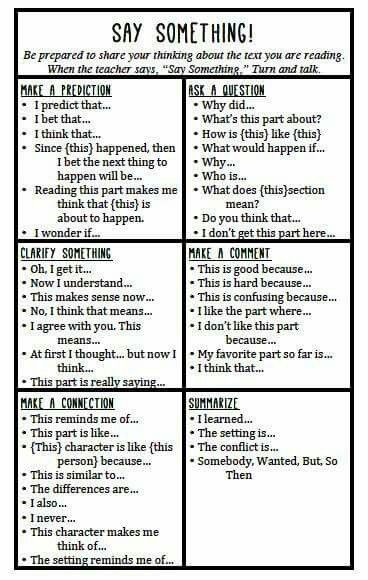
- Write a blurb on the various types of assessments. Include your experience in preparing students for high-stakes tests such as the PARCC or MCAS 2.0 Assessments.
- Common Core shifts and information ~ especially for the grade level you are interviewing for Common Core
- Memberships to professional organizations or newsletters, like the International Literacy Association or National Education Association. If you are a recent college graduate, joining such organizations looks excellent on your resume and portfolio.
- Listen to the Sold a Story podcast and explain HOW kids learn to read via the Science of Reading – phonics and decodable texts! This shows you are keeping up with the latest research. Systematic phonics has been proven to be the most effective way of teaching children to read.
- Provide information on who you are outside of school. What are your talents and interests? Are you an artist, musician, or athlete?
More Portfolio Ideas
More Portfolio Ideas This article suggests making 6 duplicate “mini” portfolios ~ one for each interviewer to browse through as you are being interviewed! That would be helpful!
Have an excellent inspirational quote on the cover of your portfolio!
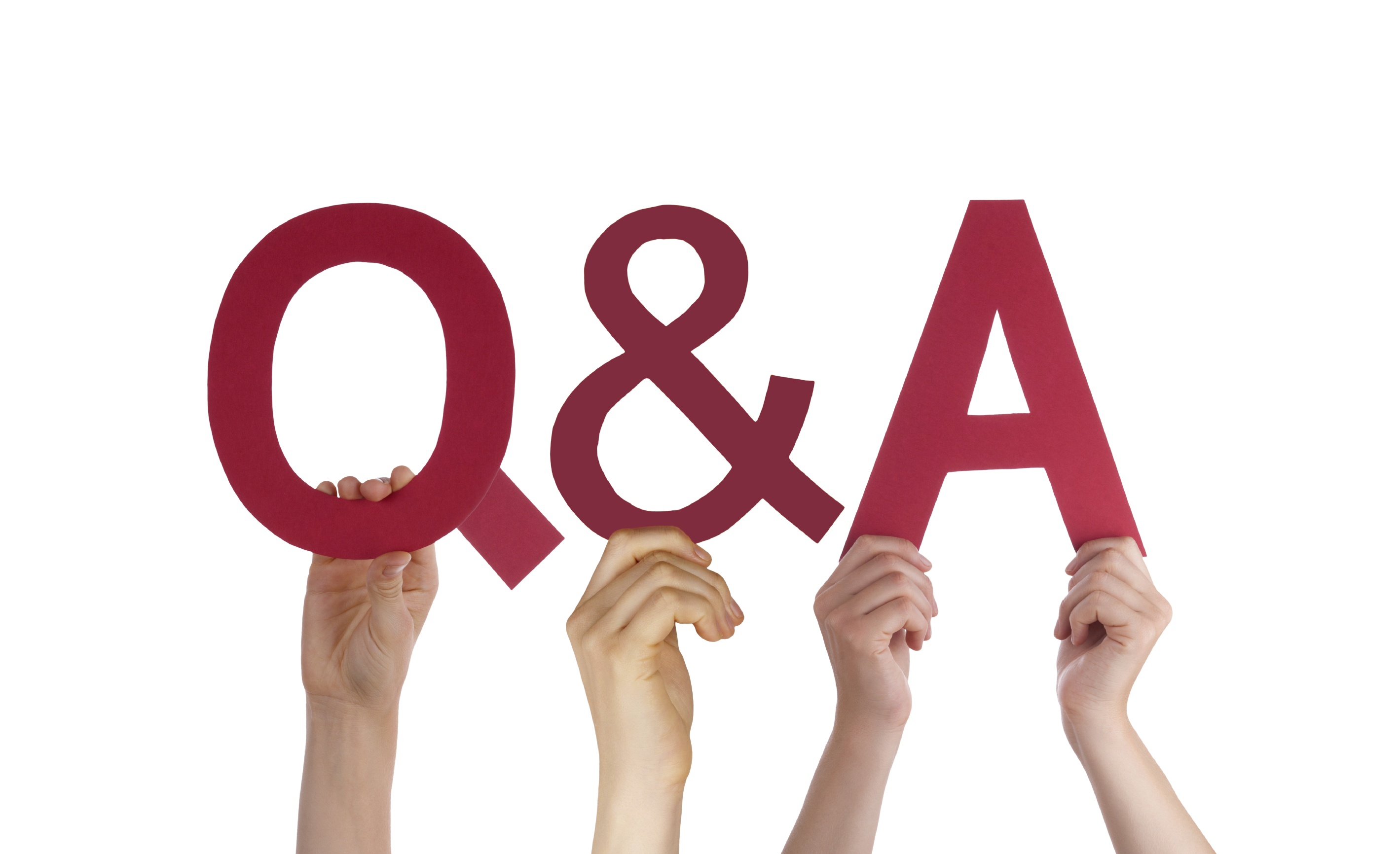
Common Questions with Answers
Your philosophy. . .
1. What is your philosophy on education? (This blurb can be written right in your portfolio!) Write a blurb! Here are some ideas:
- Philosophy A
- Philosophy B
- SAMPLE: My philosophy of education encompasses several parts. An effective teacher should be a facilitator to guide hands-on learning, not just a lecturer. Effective teachers must develop lifelong learners and problem solvers and promote self-discipline and responsibility. Education is not only academic ~ it is emotional, social, and physical.
What you enjoy most. . .
2. What do you enjoy most about teaching? (Your portfolio will speak to your organization and creativity, but also include some of the following points. . .)
- Working with children
- Satisfaction with student growth in all aspects ~ academically, socially, and behaviorally.
- Contributing positively to a child’s development
- Integrating technology into the curriculum
- Being creative, organized, efficient
- Collaborating with colleagues
- Helping students achieve their potential
- I am challenging myself by continually learning new curriculums or new methods.
Best lesson. . .
3. Describe the best lesson or unit that you designed and taught. (You will have this in your portfolio!) Try to put in an ELA and Math lesson. Be specific about what the students did and how you assessed them. Think about the objectives and interactive learning strategies that were incorporated. RETELL has a list of interactive strategies.
Common Core. . .
4. Discuss the Common Core and how it influences your teaching. (Your portfolio will include this!) The Common Core. . .
- Focuses on college and career readiness
- Students cite evidence
- Students read more nonfiction texts
- Rigorous curriculum
- Higher standards and expectations
- Higher-level questioning
- Students dig deeper
- Implement close reading strategies
This mat is free on Teachers Pay Teachers
Your ELA and Math blocks. . .
5. What would we see during your math block at the grade level you are applying for? Your ELA block? (You will have this in your portfolio!)
- Objectives and Common Core standards are posted and discussed with students.
- Mini-lesson with visuals, tapping into all modalities ~ seeing, hearing, moving, touching (visual, auditory, kinesthetic, tactile)
- Gradual release of responsibility model
- Whole class, small group, partner, individual work
- Use of interactive learning strategies such as Turn and Talk, Think/Pair/Share, Jigsaw, and Numbered Heads Together ~ see RETELL
- Students working at their level “with a reach” to move to the next level
- Lots of praise and positive reinforcement
- Teacher circulating the room when not working directly with students
- Teacher keeping records, conferencing with groups and individuals
- Students on task
- Students having choices in seating, assignments, projects
- Every child gets what they need ~ what’s fair isn’t always equal
- ELL students and students on IEPs are fully included and participating
- Higher-level questions being asked
- Using research-based methods (See RESEARCH menu on my home page)
- NEW from the SCIENCE OF READING: Students refer to Sound Walls as needed for decoding and encoding.
What grade are you applying for? Check out my Reading Expectations by Grade Level pages to understand/explain the science of reading: Kindergarten, 1st, 2nd, 3rd, 4th, 5th.
Positive classroom climate. . .
6. How do you create a positive classroom climate? (You will have this plan in your portfolio!)
- Being a positive person
- Not raising my voice
- Using nonverbal cues
- Treating students with dignity and respect
- Having students create rules on the first day, so they have ownership of rules, expectations, and consequences ~ have rules posted, and students sign the rule “contract.”
- Being consistent
- Flexible seating options include wiggle stools, yoga balls, floor seating with a low table, and standing at a standing table ~ if it is allowed in the district/school.
- Giving students choices in seating locations, projects, assignments
- Accenting the positive
- Implementing the Open Circle curriculum or the behavior curriculum in the district
- Knowing my students and setting each one up for success
- Preventing poor behavior by being proactive and avoiding potential pitfalls
- Using nonverbal cues to redirect students
- Assigning classroom jobs gives the students a sense of pride, ownership, and belonging.
- Having whole class goals and rewards like pajama day or eating lunch outdoors.
- Attending individual students’ extra-curricular events and showing my dedication and caring about each student.
- Calling home or emailing to report GOOD news!
- Class DoJo ~ Research this!
Discipline. . .
7. How would you handle a student who does not follow the classroom code of conduct? (Again, you will have this in your portfolio!)
- In a 1:1 conversation with the student, inquire what might be causing the behavior.
- Accent the positive
- Set the student up for success. Give the students options for classroom seating. Does the student need a larger desk, frequent breaks, or modified assignments?
- Implement a back-and-forth journal between home and school so the parent can be involved and help redirect the behavior.
- Report GOOD NEWS to the parent.
- Have an incentive chart so the student can strive for a goal such as reading aloud to a kindergartener, lunch with the teacher, or other. Keep the chart private ~ between you and the student.
- Check-in with the School Adjustment Counselor to see if SAC services might be needed.
- Gather data on behavior ~ what triggers it? What have you tried?
- If all else fails, seek advice through the Teacher Support Team if the school has one. This way, the behavior is formally documented. You can collaborate with colleagues on a remediation plan.
Parent communication. . .
8. How do you communicate with parents? How do you engage parents in learning? (Again, you will have this in your portfolio!)
- On the 1st day of school, send home a survey and gather data about how best to reach each parent ~ by phone (and the best time to call) or email. The Remind app is excellent!
- A classroom website ~ posts lesson plans, homework, ways to help the child, and links to online resources.
- Grades can be posted on PlusPortals. Does the district use an online system for parents?
- School or PTO Facebook can alert parents to events
- Classroom newsletters
- Google Classroom ~ teachers post assignments so parents can view them.
- Daily homework folder, which outlines homework to be signed
- Home/School behavior journal if needed
- Parents will be invited to attend classroom performances, be guest readers, or teach for 30 minutes in an area of their expertise.
- Parents can leave a voicemail, and the teacher will return parent calls
- Back to School Nights and other school-based events
- During morning and afternoon duties, a teacher might bump into parents and have a quick check-in.
- Translators can be called ahead of time for bilingual conferences.
- Parent volunteers for field trips
- Reporting GOOD NEWS home as needed.
How would you be described. . .
9. How would your colleagues describe you? (Think of positive adjectives.)
- Dedicated
- Hard-working
- Approachable
- Team player
- Supportive
ELLS and IEPs. . .
10. What’s important when working with ELL students and with students on IEPs? (Your list is in your portfolio!)
- Accommodations are being followed.
- Need to know the WIDA levels and the IEP goals and accommodations
- Modify work as needed
- Preferential seating
- Make all children feel included, welcome, and successful
- Implement interactive learning strategies RETELL
- Teach using all 4 modalities to reach all learners
- Use cooperative group work so students can learn from each other and motivate each other
- Keep data and track growth
- Collaborate with colleagues
Assessment and accommodations. . .
12. How do you assess student progress? (Check your portfolio! 🙂 )
Formative Assessment: The goal of formative assessment is to monitor student learning and provide ongoing feedback that can be used to improve teaching and student learning. Formative assessments help students identify their strengths and weaknesses and target areas that need work. In addition, they help teachers identify problem areas to remediate immediately.
Summative Assessment: Summative assessment aims to evaluate student work at the end of a unit by comparing it to some standard or benchmark. These are high-stakes or have a high point value.
Performance Assessment: A performance assessment is how students demonstrate that they have mastered specific skills by performing or producing something.
Authentic Assessment: Authentic assessments have 2 characteristics. First, they may be embedded in classroom routines of instruction and learning and conducted during regular activities. They are related to learning and achievement goals, and our inferences from this information can be connected to student learning. An example would be a school store ~ setting up goods, counting money, and giving change. Second, they may be focused on real-world reading. These tasks focus on the world outside of school.
The “Other” Assessment: Assessing essential factors such as motivation, engagement, self-concepts, agency, interest, and attitudes.
Always analyze data and use data to guide teaching. Regroup students frequently based on data. Talk to last year’s teacher and this year’s specialists to track students’ progress that way.
- Running records
- DRA2 ~ this is an informal reading assessment
- Pre and post-tests
- Unit tests
- Quizzes
- Daily observations
- Exit tickets
- ANET progress, MCAS 2.0 scores, PARCC scores. . .
- Free Literacy Assessments ~ get some ideas from this page.
- Students can self-assess. Here are some examples of Self and Peer Assessments
- Gather student work to create growth portfolios.
- Some students may be formally evaluated for potential IEPs. Provide accommodations as needed:
Common Accommodations
- Clear and concise directions, rules, and expectations
- Break down tasks into smaller chunks
- Gain eye contact with student before giving directions
- Repetition and restating directions
- Preferential seating
- Limiting distractions
- Use of visuals (schedules, rules, tasks)
- Frequent check-ins
- Modeling of language and classroom expectations
- Preview, clarify, and repeat new information
- Allow students extra time to process information and formulate a response.
- Have students repeat directions and instructions to make sure they understand what is being asked of them
- Connect new material to prior knowledge
- Use of graphic organizers
- A multi-modal approach to learning
- Positive reinforcement
- Opportunities for movement breaks
Collaboration. . .
13. How do you collaborate with colleagues? If you were a teacher or aide before, did you meet at weekly teacher support teams, attend building meetings, or attend curriculum meetings? Elaborate on those! If you are a recent college graduate, talk about your cooperative learning work in college!
My collaboration includes STAT (weekly Student Teacher Assistance Team meetings), School Council ~ meets monthly to discuss schoolwide projects and budget, LAT (Language Acquisition Team) ~ meets weekly to discuss English Language Learners’ growth, monthly Curriculum Team meetings, and monthly building meetings, I coordinate the foyer bulletin boards based on feedback and ideas from staff, we use Google forms as a staff to collaborate on student goals and projects with the “invitation to edit” button, we have data team meetings in which we discuss students, goals, lessons, and regrouping of students. . . .
Technology. . .
14. How do you use technology in the classroom? (Check your portfolio!)
- Get ideas for your portfolio.
- ASK INTERVIEW COMMITTEE: What technology is available for students/teachers?
Strengths and weaknesses. . .
15. What are your strengths/weaknesses? Your strengths:
- Organization
- Attention to detail
- Experience in the classroom ~ give examples of successes!
- Drive and motivation to keep taking workshops and classes
- Communication with colleagues and parents
- Positive attitude
- Personal experience as a student (share) and what motivated you to become a teacher
Your weaknesses should be POSITIVE and be STRENGTHS!!!
- Drive, determination, and persistence that keep you up at night, thinking of ways to reach all students and ways to make learning fun, interactive, and engaging.
- Using every possible method and tactic to reach all students.
- Taking on challenges and never backing away from a challenge. You thrive with a lot on your plate when it benefits the students.
Questions. . .
16. Do you have any questions for us? (Show interest in the school and position ~ although tempting, stay away from asking specific hiring date questions.) Instead, ask a couple of the questions they’ve asked YOU! For example:
- How do the classroom teachers incorporate technology at ____ grade level?
- What ELA and Math programs does this school use?
- How does this school engage parents in learning?
- Does this school have a Teacher Support Team? (A team meeting to discuss students who might be having issues behaviorally or academically ~ to advise teachers on remediating issues.)
- What type of professional development does this district offer/will be offering?
- What types of Response to Intervention does the district engage in?
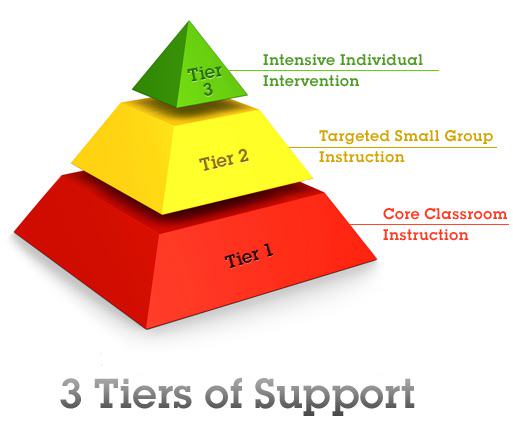
CONCLUDING THE ELEMENTARY TEACHER INTERVIEW
- Say thank you for their time, and say you would appreciate the opportunity to teach a demo lesson!
- Offer to leave the portfolio overnight for their review or leave the information on how they can revisit your online portfolio.
- Shake hands with the committee if you haven’t done so initially.
Let me know if you think of any other potential elementary teacher interview questions and answers. I will add them!
Check out Demo Lesson Tips!
![]()

